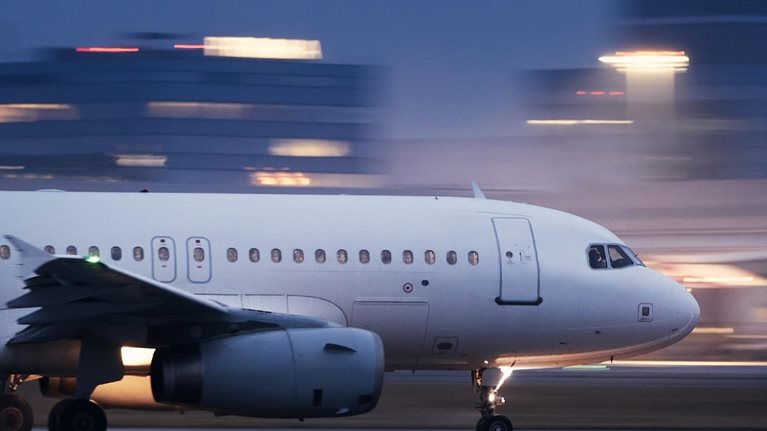This year, for the 13th time, Singapore Changi Airport was named the world’s best by the industry research group Skytrax. It is the world’s fourth-busiest international airport according to OAG, serving nearly 68 million passengers in 2024 with a flight operating about every 80 seconds. Changi’s Terminal 5, which will add capacity for about 50 million additional passengers per year, is currently under construction and scheduled to open in the mid-2030s.
Lim Ching Kiat is Changi Airport Group’s Executive Vice President of air hub and cargo development. He recently spoke with McKinsey Senior Partner Mukund Sridhar about how to capture growth opportunities, harness new technologies, future-proof development projects, and design the always-open “airport city” of tomorrow. The following is an edited transcript of their conversation.
Capturing growth
Mukund Sridhar: You recently celebrated the groundbreaking for Changi Airport’s Terminal 5. The terminal is being built with an eye toward capturing new sources of demand. Emerging Asia and Asia–Pacific are expected to be among the largest sources of new travelers worldwide. What is your approach to serving these growing markets?
Lim Ching Kiat: There are three main areas where we can expand our air connectivity. First, to key economic centers. Second, to secondary cities in Asia. And third, to new markets with growth potential.
For existing economic centers like London or New York, which we are already linked to, we think that traffic will continue to grow steadily. We need to make sure our capacity grows in tandem. Today, we have eight daily flights between Singapore and London. We want more.
Singapore's geography also places us in the middle of some fast-growing economies. China, India, Indonesia, and the rest of Southeast Asia have a rising middle class and young populations. Their propensity for travel will increase. I think this forms the key business case for Terminal 5 and for our developments moving forward. We are already connected to most of the key metro cities in Asia, but there are always new cities that are coming up—such as Visakhapatnam in India or Chongqing in China.

The future of airports: Seamless, automated, and personalized
There are also other regions where we feel that we are underpenetrated. Central Asia, particularly Mongolia, is an area that we want to grow our links to. Africa and the Middle East are areas that we are constantly looking at. We are aiming to offer more flights to Riyadh—we think the market is there, but we need to work with the right airline partners.
One other potential area which we have been working on is multimodal traffic. For instance, Singapore will be one of the key home ports in the Asia region for Disney Cruises. If a [group of passengers] flies from China to Singapore to board a Disney Cruise, how can we transport their luggage from the airport directly onto the cruise ship without them having to handle it themselves? We’re doing trials to explore how we can make the fly–cruise traveler’s journey more seamless.
Future-proofing a terminal
Mukund Sridhar: Tell us about how you’re future-proofing Terminal 5 in terms of its design, amenities, and facilities.
Lim Ching Kiat: Today, at Changi Airport’s terminals 1 to 4, we have a combined capacity of 90 million passengers per annum. Terminal 5 [T5] will add another 50 million to that when the first phase opens in the mid-2030s. One way we are future-proofing T5 is by ensuring that its capacity is modularized as much as possible—that it can be expanded according to future market demand.
T5 is a new type of megaterminal where everything is housed inside one location. While mega-airports and megaterminals are the trend, from a passenger experience point of view, sometimes you go to a mega-airport and you feel a bit lost or overwhelmed. The wayfinding can be a bit difficult, and sometimes the whole experience feels a bit impersonal. So we are trying to leverage experiences from running the current airport to ensure that we cater to different passenger segments—first-time travelers, multigenerational travelers, travelers with disabilities—and make the experience more personable even though it’s a big terminal. We want to make sure that the road warrior business travelers can get quickly from point A to point B, but we want to provide families with young children with some distractions to break up a journey and keep things more leisurely. T5 is designed to be mega-yet-cozy. Through architectural gestures and distinct precincts, we’ve broken down the scale to create spaces that feel warm, inviting, and intuitive—qualities that travelers have come to associate with Changi’s existing terminals.
Climate change is another area we are watching. So, for example, the airfield at the Changi East development where T5 is, is elevated 5.5 meters above sea level to help future-proof against unpredictable weather conditions. In the past few years, quite a few airports have been subject to flooding from sudden heavy rainfall.
In terms of our physical design, we need to consider different aircraft, including future aircraft types. We already service a variety of aircraft ranging from small to very large, and our experience with accommodating the Airbus A380, for instance, brought us many useful lessons. For upcoming new aircraft types—specifically, the Boeing 777-9 with foldable wingtips—we are currently in the process of getting the airport ready to accommodate them starting next year. We are also looking at how to accommodate eVTOLs [electric vertical takeoff and landing aircraft]. Of course, we have to manage this in a neighborhood with very crowded airspace. But we are always open to working with the equipment manufacturers and the policymakers on how to service new aircraft types.
Harnessing new technologies
Mukund Sridhar: With the emergence of AI and advanced facial recognition and biometric technology, how do you see technology transforming the flow of security, ticketing, checking in, baggage handling, and so forth?
Lim Ching Kiat: We are trying to harness AI and video analytics as much as we can. For example, we have deployed trials for AI to be used in security screening for detection of prohibited items. Traditionally, at airports, this process is quite manual: you go to a scanner or X-ray machine, and there’s a person behind it screening the items. This is the perfect use case for video analytics and AI, and we have done trials that reduce screening times by up to 50 percent. If trials continue to be successful, we hope to scale them up for widespread deployment.
Another area is airside operations. When the aircraft docks at the loading bridge, there are a lot of activities going on—both upon arrival and during predeparture. There are trucks refueling the aircraft, catering trucks, cleaning, cargo loading, baggage, and so forth. We have a pilot project in which we record all these activities and share data from the video analytics with all our partners in airport operations. Whenever some activities get out of step and are delayed, every party handling the flight on the ground gets the information, and we can see how to remedy it. The goal is to keep flights running on time and provide a seamless passenger journey. And so far, the results are quite positive, so we are trialing this further to fine-tune and scale up.
There are also some other areas that we are trying to use technology to solve. For example, lightning strikes: Whenever there’s lightning, it can lead to a stop work order on airside. So we are trialing robotics and autonomous vehicles to transport baggage even during challenging weather conditions to ensure continuous baggage flow and timely delivery to passengers. This is an area we are still trying to crack to see how to use technology to mitigate against such disruptions.
Mukund Sridhar: Do you envision autonomous ground vehicles and autonomous cargo facilities being prevalent at T5 and in future versions of Changi Airport?
Lim Ching Kiat: Singapore, like many other countries, is projected to face worker shortages, so automating many of these processes is vital. This way, we leverage technology to free up staff from manual, repetitive work so they can focus on more critical operational tasks. We are already trialing the automated docking of passenger loading bridges for passengers to board the aircraft. This process, which happens several hundred times a day, used to be done manually.
We are also looking at autonomous vehicles and robotic applications in terms of, for example, transporting baggage. The last steps of that can be tricky. Baggage loading and unloading at airports today are still very manual processes. We are trialing certain robotic applications that, if successful, will lead to higher productivity. These trials are already happening in preparation for T5, which will leverage them to automate and digitalize airport operations at scale.
Mukund Sridhar: Could the passenger of the future expect to maybe not have to check in at all—just walk straight through immigration using their face as a passport?
Lim Ching Kiat: One of the key innovations we have started these last few months is passport-less travel. So now at our auto-gate, your face is your passport, and you do not have to use your passport when you go through immigration. That has been very well received, and we are quite happy with that service, and it will be deployed on a bigger scale at Terminal 5.
We are dreaming of other possibilities—for instance, using your face as your biometric token and then putting this token into a biometric wallet that can scale beyond just Singapore. We are keen to see how we can make progress. But at the end of the day, technology is just a skin, and the most important thing is being customer centric.
For example, we’ve been having this debate within our team: When you get off a plane and you need to know which gate you’re connecting to, do you want the information pushed to you via your personal device? Or would you rather look at a big board as most people do today? Some of us feel that the passenger fresh off the plane and still dealing with jet lag might just want to look at the big board. In the end, either way, it needs to be the customer at the center. The technology is just a means of delivering what works best for them.
Meeting cargo demand
Mukund Sridhar: Changi’s made rapid strides as a cargo hub. As e-commerce continues to develop, and with Southeast Asia a growth center in both demand and supply, how are you thinking strategically about cargo?
Lim Ching Kiat: For cargo demand, I think some of the principles are the same as with passenger demand, in the sense that the airport’s success is dependent on the success of the whole ecosystem. We can’t do it by ourselves. There’s no point building a very good airport but not connecting with strong partners.
We understand that e-commerce needs are specific, so we work with partners like airlines and ground handlers to make sure that we have the right infrastructure and specialized handling capabilities to handle e-commerce traffic. Last year, we opened a new facility that is especially suited for e-commerce operations because it has warehouses with runway access.
Creating an airport city
Mukund Sridhar: Looking ahead, 20 or 25 years from now, what are some of your most provocative, wildest theories about the airport of the future?
Lim Ching Kiat: One vision we have is the idea of an airport city. We don’t just want to be a bus stop where people come and go. We already have features like airport hotels, but we want to think about how to supersize that. Imagine you could have an apartment at the airport. Or why can’t offices be at the airport? For team events, you could just come in for half a day and then get out. There could be a use case for private bankers, or for medical clinics, that want to serve their regional clients and would benefit from office facilities at the airport. With the idea of an airport city, we could redefine some possibilities.


